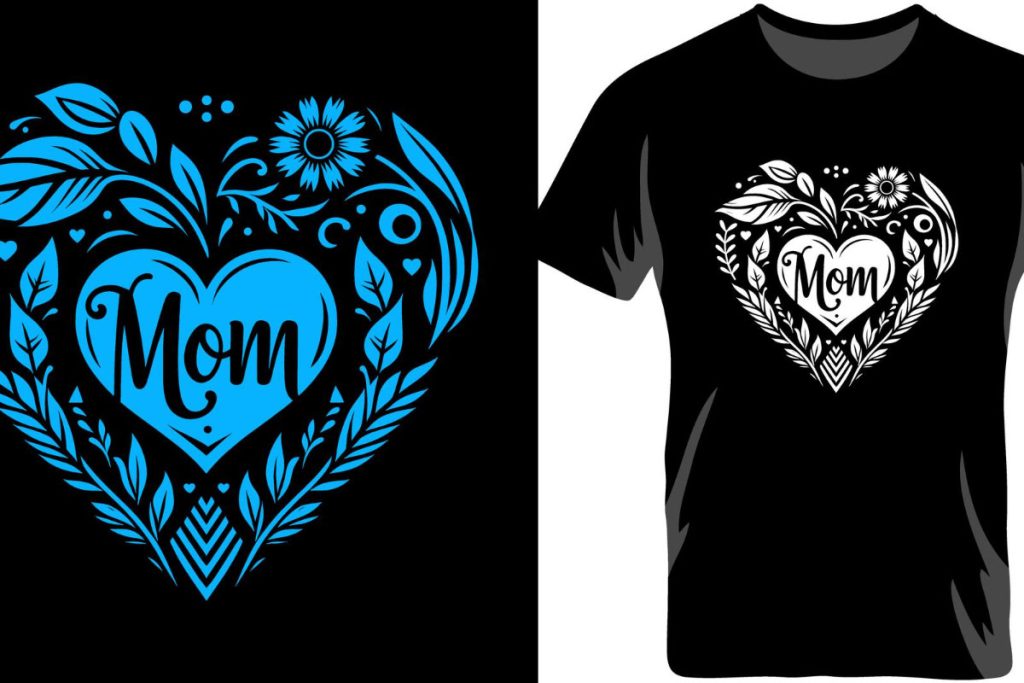DTF transfers, or Direct to Film transfers, have emerged as a game-changing technology in the world of textile printing, providing unparalleled vibrancy and durability to designs. As the popularity of this method grows, so does the necessity for understanding its intricacies and avoiding common DTF errors that can compromise quality. In this guide, we will explore essential DTF printing tips that will help you navigate the challenges often faced by beginners, such as mistakes with DTF transfers that stem from poor film quality or improper equipment care. By focusing on best practices and recognizing frequent heat transfer printing mistakes, you can ensure that your fabrics look stunning and last longer. Join us as we uncover the information you need to flourish in this innovative printing landscape.
Direct to Film printing, an innovative approach to creating high-quality textile prints, has revolutionized the printing industry in recent years. This method not only allows for bright, detailed images but also offers a level of durability that traditional methods may lack. However, ensuring success with this process requires knowledge of common pitfalls and misunderstandings surrounding this technology. Mistakes in film selection, ink quality, and equipment maintenance can lead to disappointing results that undermine your efforts. By understanding and addressing these key areas, you can elevate your Direct to Film printing projects to new heights.
Understanding DTF Film Quality: The Key to Great Transfers
DTF film quality plays a pivotal role in the entire printing process. A good-quality DTF film ensures that the colors print correctly and have the necessary adhesive properties to bond with the fabric. Low-quality films can lead to frustration, resulting in prints that peel off easily or lack vibrancy. Therefore, selecting high-grade films designed for DTF applications should be a priority. The right film interacts effectively with the ink and withstands the heat press’s pressures, leading to stunning results that can stand up to wear and washing.
Moreover, it’s crucial to consider the specific requirements of the fabric you’ll be printing on. Different materials can react differently to various DTF films. For instance, cotton and polyester blends may require different types of coatings on the DTF film to achieve optimal results. Always consult both your ink and your film’s specifications to find a compatible combination that enhances adhesion and appearance, thereby minimizing common DTF errors.
To further optimize your DTF printing process, be aware of the environmental factors such as humidity and temperature in your workspace. These elements can also affect the film’s performance and longevity on the garments. Proper storage and handling of DTF films can make a significant difference in output quality.
In summary, prioritizing DTF film quality not only elevates your prints’ overall aesthetic but also contributes to their durability, thus preventing costly mistakes. Investing time in testing different films will pay off significantly in the long run, ensuring you avoid the pitfalls associated with lower-quality alternatives.
Avoiding Common DTF Errors for Successful Prints
Common DTF errors can quickly derail your printing project. One of the most frequent mistakes is using incorrect heat settings. Every film type and substrate has its specific temperature requirements for optimal adhesion. It’s vital to consult the manufacturer’s instructions and ensure your heat press settings are calibrated correctly, as even a small discrepancy can lead to print failures. Not applying enough heat can cause the ink not to bond well, resulting in premature peeling, while excessive heat can ruin the film altogether.
Moreover, it’s essential to closely monitor the pressure applied during the heat transfer. Too much pressure can damage the film, while too little can lead to spotty adhesion. Always perform test prints to identify the perfect combination of temperature, time, and pressure for your specific setup. Documenting these parameters will help streamline your future projects, allowing you to sidestep common DTF printing mistakes.
Taking the time to learn about these common issues can drastically improve your outcomes. Many professionals recommend investing in robust training or workshops to familiarize yourself with the DTF process before diving into production to minimize costly errors that affect both quality and profit.
In conclusion, understanding and addressing these common DTF errors are critical for achieving professional-quality prints. With careful attention to detail and a commitment to continuous learning, you can avoid these pitfalls, achieving results that exceed expectations while fostering customer satisfaction.
Essential DTF Printing Tips to Improve Outcome Quality
To ensure successful DTF printing, adopting effective tips can make all the difference in quality. First and foremost, focus on using the right inks. High-quality inks that are specifically formulated for DTF applications guarantee better vibrancy and durability than generic options. Investing in reputable ink brands not only enhances the visual appeal of your prints but also prolongs their life on garments. This investment leads to happier customers and reduces the likelihood of reprints due to fading or lackluster colors.
Another valuable tip involves maintaining consistency in printer settings. Regularly calibrating your printer is essential, as this can prevent variations in output which may lead to inconsistent colors or poor image resolution. Utilize the printer’s provided calibration tools, or seek assistance from professionals if necessary. Consistency helps in creating a reliable quality that customers can trust, reducing the chance of common DTF errors impacting your business reputation.
Additionally, investing time in exploring various fabric types can yield beneficial insights. Different materials require unique approaches for best results. For instance, while cotton may interact well with one type of transfer, polyester may need a different technique altogether. By familiarizing yourself with these nuances, you can optimize your printing strategy.
In summary, implementing these DTF printing tips can significantly enhance your output quality. By selecting the right materials and staying vigilant about maintenance and settings, you can achieve prints that resonate with both aesthetic and durability, ultimately fostering a satisfied customer base.
The Importance of Pre-Press Setup in DTF Printing
Pre-press setup serves as the foundation for successful DTF transfers. Skipping or misjudging this step can lead to a cascade of failures down the line. Ensuring you have the correct temperature, timing, and pressure before proceeding with heat pressing is pivotal for a solid adhesion. Each DTF film has specifications that dictate the required pre-press conditions, and adhering to these instructions can dramatically reduce problems such as fading or lifting.
Additionally, testing a few sample prints during the pre-press stage can help identify any potential issues before mass production begins. Use leftover scrap fabrics for these tests to determine the best temperature and time settings for optimal transfer results, keeping in mind how different fabrics might respond differently during heat application.
Moreover, take note of additional factors, such as the condition of your heat press. Over time, the heat platens can wear down, affecting their capacity to maintain consistent temperatures and pressure. Regularly check and calibrate your heat press to ensure it delivers the best performance. No detail should be overlooked in your pre-press setup as it sets the tone for the overall success of your DTF printing process.
In essence, investing time and effort into your pre-press setup is a wise strategy to ensure successful DTF transfers. A little diligence at this stage can prevent a multitude of problems, paving the way for producing high-quality prints that will satisfy both you and your clients.
Post-Press Care: Enhancing Longevity of DTF Transfers
Post-press care is often overlooked, yet it is crucial for enhancing the longevity of DTF transfers. After successfully heat pressing a design onto a garment, it’s essential to follow specific care instructions to allow the print to cure properly. Many manufacturers recommend letting the print cool for a set period, which can significantly affect the final adhesiveness and durability of the design. Rushing this stage can lead to premature damage, thereby reducing customer satisfaction.
Once the transfer has cooled, handling the garment with care is essential. Always wash DTF printed materials gently and inside out, while avoiding harsh chemicals that could compromise the integrity of the print. Educating your customers on these care instructions can also make a significant difference in their experience and satisfaction with the purchased item.
Furthermore, incorporating a quality check into your post-press routine can help catch any errors or deficiencies before products reach your customers. Regular assessments can help improve overall production and reveal areas where adjustments might be necessary.
In summary, the attention given to post-press care is just as significant as the pre-press setup. Proper care prolongs prints’ longevity and enhances customer experience, leading to repeat business and positive word-of-mouth.
Conducting Sample Tests: A Crucial Step for DTF Success
Conducting sample tests is a fundamental step in streamlining the DTF printing process and ensuring high-quality outcomes. Before launching into large-scale production, it’s paramount to run tests on various fabrics to identify any incompatibilities with your transfer materials. Each fabric can behave uniquely during the DTF process, and these sample runs can uncover potential issues with adhesion or color vibrancy.
Additionally, sampling allows you to fine-tune the necessary printer settings, such as ink density and resolution, ensuring that the final output meets aesthetic preferences. Many experts recommend keeping a portfolio of fabric types with corresponding settings for future reference, as this can assist significantly in minimizing common DTF errors when working with materials again.
Investing time in this crucial phase not only saves you potential headaches down the line but also leads to more informed decision-making regarding the materials you choose to work with and the methods you apply. It can enhance your credibility as a distributor of quality garments, ensuring your prints stand out.
Ultimately, embracing the practice of conducting thorough sample tests is vital for achieving successful results in DTF printing. By meticulously evaluating various components beforehand, you set yourself up for effective production run operations, leading to higher customer satisfaction and reduced wasted resources.
Frequently Asked Questions
What are the common mistakes with DTF transfers that beginners should avoid?
Beginners often make common mistakes with DTF transfers such as using the wrong type of transfer film, neglecting pre-press setup, and ignoring ink quality. Each of these errors can lead to poor print quality and durability, so it’s essential to choose high-quality materials and follow proper procedures.
How can I improve my DTF printing tips for better results?
To enhance your DTF printing, consider using high-quality DTF film and inks, maintaining consistent printer settings, and ensuring thorough pre-press and post-press care. Regularly testing on sample fabrics and performing equipment maintenance are additional tips that can drastically improve your outcomes.
What role does DTF film quality play in the success of transfers?
DTF film quality is crucial for successful transfers as it directly influences adhesion, print vibrancy, and durability. High-quality films specifically designed for DTF processes help achieve the best results by ensuring compatibility with inks and heat pressing conditions.
What are the most frequent heat transfer printing mistakes to avoid with DTF?
Frequent heat transfer printing mistakes with DTF involve improper temperature settings, skipping pre-press or post-press steps, and using cheap materials. To prevent these errors, carefully follow the manufacturer’s specifications and guidelines for optimal results.
How can I assess common DTF errors during the printing process?
To assess common DTF errors, monitor factors like film adhesion, print quality, color consistency, and overall durability. Regularly review printer settings and avoid shortcuts to ensure that the final product meets your quality standards.
Why is it important to test on sample fabrics before DTF printing?
Testing on sample fabrics before executing DTF printing is important because it allows you to verify material compatibility, adjust settings accordingly, and ensure that the prints achieve proper adhesion and appearance. This can prevent costly production mistakes later.
| Key Point | Explanation |
|---|---|
| 1. Not Using the Right Film | Using specific DTF transfer films is essential for adhesion and print quality. |
| 2. Inadequate Pre-Press Setup | Proper temperature and time settings are crucial for effective heat pressing. |
| 3. Ignoring Ink Quality | High-quality DTF inks ensure vibrant, long-lasting prints. |
| 4. Inconsistent Printer Settings | Regular maintenance and calibration are necessary for consistent print quality. |
| 5. Neglecting Post-Press Care | Allowing prints to cure fully can enhance durability. |
| 6. Not Testing on Sample Fabrics | Testing on fabrics helps ensure proper adhesion and appearance before production. |
| 7. Overlooking Maintenance of Equipment | Routine maintenance is crucial to avoid equipment malfunctions and maintain output quality. |
Summary
DTF transfers have become an essential technique in the textile printing industry, transforming how designs are applied to fabrics. Understanding the nuances of DTF transfers, such as material selection and equipment care, can significantly influence both the quality and longevity of prints. By avoiding common mistakes—from choosing the right film to ensuring consistent printer settings—you can achieve vibrant designs that stand the test of time. Moreover, continual advancements in DTF technology, like eco-friendly inks, further contribute to the efficiency of this process. By staying informed and implementing best practices, businesses can fulfill customer expectations while minimizing waste and maximizing satisfaction.



